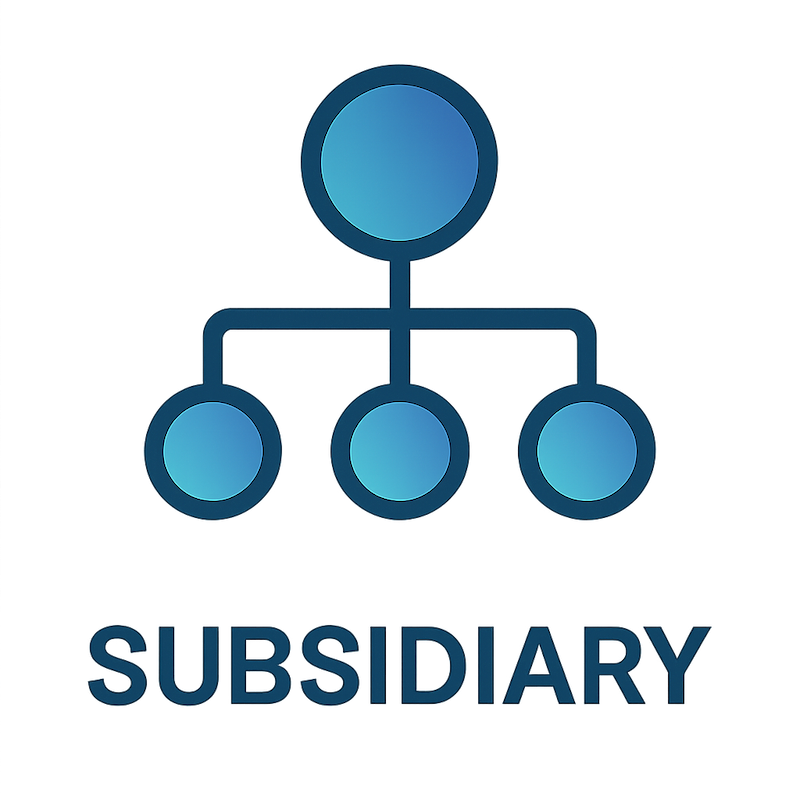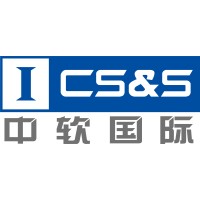
Jenkins Company Cyber Security Posture
jenkins.ioJenkins is an open source automation server written in Java. Jenkins helps to automate the non-human part of the software development process, with continuous integration and facilitating technical aspects of continuous delivery. It is a server-based system that runs in servlet containers such as Apache Tomcat. It supports version control tools, including AccuRev, CVS, Subversion, Git, Mercurial, Perforce, TD/OMS, ClearCase and RTC, and can execute Apache Ant, Apache Maven and sbt based projects as well as arbitrary shell scripts and Windows batch commands. The creator of Jenkins is Kohsuke Kawaguchi.[3] Released under the MIT License, Jenkins is free software.[
Jenkins Company Details
jenkinsio
29 employees
16046.0
none
Information Technology & Services
jenkins.io
Scan still pending
JEN_1955320
In-progress
Between 200 and 800
This score is AI-generated and less favored by cyber insurers, who prefer the TPRM score.
 Jenkins Global Score
Jenkins Global Score.png)

Jenkins Company Scoring based on AI Models
| Model Name | Date | Description | Current Score Difference | Score |
|---|---|---|---|---|
| AVERAGE-Industry | 03-12-2025 | This score represents the average cybersecurity rating of companies already scanned within the same industry. It provides a benchmark to compare an individual company's security posture against its industry peers. | N/A | Between 200 and 800 |
Jenkins Company Cyber Security News & History
| Entity | Type | Severity | Impact | Seen | Url ID | Details | View |
|---|---|---|---|---|---|---|---|
| Jenkins | Vulnerability | 85 | 4 | 6/2025 | JEN302060925 | Link | |
Rankiteo Explanation : Attack with significant impact with customers data leaksDescription: A critical cross-site scripting (XSS) vulnerability in the popular Jenkins Gatling Plugin allows attackers to bypass Content-Security-Policy (CSP) protections. The vulnerability, tracked as CVE-2025-5806, affects Gatling Plugin version 136.vb_9009b_3d33a_e and poses significant risks to Jenkins environments utilizing this performance testing integration tool. The exploitation of this vulnerability requires users with the ability to modify Gatling report content, which typically includes developers, QA engineers, and system administrators with appropriate Jenkins permissions. Once exploited, attackers can execute arbitrary JavaScript code within the context of the Jenkins application, potentially leading to session hijacking, credential theft, or unauthorized administrative actions. The high CVSS severity rating assigned to this vulnerability reflects its potential for significant impact on Jenkins’ infrastructure. | |||||||
| Jenkins | Vulnerability | 85 | 4 | 8/2025 | JEN537081025 | Link | |
Rankiteo Explanation : Attack with significant impact with customers data leaksDescription: A critical command injection vulnerability (CVE-2025-53652) in the Jenkins Git Parameter plugin has been exposed by VulnCheck. Initially rated as medium, the flaw allows remote code execution (RCE), enabling hackers to take control of unauthenticated Jenkins servers. Around 15,000 servers are at risk due to disabled security settings. The vulnerability permits attackers to inject malicious commands, potentially accessing sensitive data like master keys. Despite a patch being released, administrators can manually disable it, leaving systems exposed. VulnCheck warns that while widespread exploitation is unlikely, skilled attackers may use it for targeted attacks or deeper network infiltration. | |||||||
Jenkins Company Subsidiaries

Jenkins is an open source automation server written in Java. Jenkins helps to automate the non-human part of the software development process, with continuous integration and facilitating technical aspects of continuous delivery. It is a server-based system that runs in servlet containers such as Apache Tomcat. It supports version control tools, including AccuRev, CVS, Subversion, Git, Mercurial, Perforce, TD/OMS, ClearCase and RTC, and can execute Apache Ant, Apache Maven and sbt based projects as well as arbitrary shell scripts and Windows batch commands. The creator of Jenkins is Kohsuke Kawaguchi.[3] Released under the MIT License, Jenkins is free software.[
Access Data Using Our API

Get company history
.png)
Jenkins Cyber Security News
ThreatLocker CEO, Danny Jenkins, is a Featured Speaker at Black Hat USA 2025 in Las Vegas
ThreatLocker® offers a powerful Zero Trust endpoint protection platform designed to enable organizations to stop ransomware and other ...
Two-factor authentication just got easier
A new, simpler version of two-factor authentication could broaden its protection to many smart devices that currently cannot support it.
Jenkins Security Update Released With the Fixes for the Vulnerabilities that Exploit CI/CD Pipelines
The Jenkins project has issued a critical security advisory detailing vulnerabilities in five widely used plugins.
Cybersecurity expert warns of increased cyberattacks amid rising Iran tensions
Cybersecurity expert warns of increased cyberattacks amid rising Iran tensions · Warning issued over everyday foods tied to heart attacks, ...
ThreatLocker, a Pioneer in Endpoint Security, Expands into New Maitland Headquarters
Headquartered in Maitland, Florida, ThreatLocker® is a leader in endpoint security technologies, providing enterprise-level cybersecurity tools ...
"Far too many businesses in the cybersecurity industry are using AI to cut costs." - Danny Jenkins, CEO of ThreatLocker
Danny Jenkins, CEO and co-founder of ThreatLocker, believes too many businesses in the cybersecurity industry are using AI to reduce costs.
Interview with Danny Jenkins, CEO of ThreatLocker®
Danny Jenkins is the CEO and Co-Founder of ThreatLocker®, a cybersecurity company specializing in Zero Trust endpoint protection solutions.
“It’s made our jobs harder, not easier” - ThreatLocker CEO Danny Jenkins on AI
Jenkins, who said AI is mostly just a “buzzword” thrown around for marketing purposes, summarized: “It's made our jobs harder, not easier.”.
Jenkins Gatling Plugin Vulnerability Enables Content-Security-Policy Bypass
The vulnerability, tracked as SECURITY-3588, represents a serious security concern for organizations using Jenkins for continuous integration ...

Jenkins Similar Companies

Chinasoft International
Chinasoft International Limited (CSI. 00354.HK), founded in 2000, is an industry leader in globalized software and information technology services, with branches in 28 cities across China including Beijing, Xi’an, Nanjing, Shenzhen, Shanghai, Hong Kong and 18 cities in countries like America, Mexico

Huawei Enterprise
Huawei Enterprise Business Group (EBG) is committed to bring digital to every organization for a fully connected, intelligent world, including government and public sectors, financial services, energy, transportation, and manufacturing, and other sectors. Huawei focus on ICT infrastructure and utili

VINCI Energies
In a world undergoing constant change, VINCI Energies contributes to the environmental transition by helping bring about major trends in the digital landscape and energy sector. VINCI Energies’ teams roll out technologies and integrate customised multi-technical solutions, from design to implement

The Macgregor Group
A Leading Trade Order Management System Company. The flag ship product was Predator, an robust equity trading system. Macgregor took over Merrin Financial. Macgregor later was acquired by ITG (Investment Technology Group). Macgregor product and services consists of Merrin XIP - Portfolio and T

RICOH Company Limited
Ricoh is a leading provider of integrated digital services and print and imaging solutions designed to support digital transformation of workplaces and optimize business performance. Headquartered in Tokyo, Ricoh’s global operation reaches customers in approximately 200 countries and regions, sup

Exela Technologies
Exela is a business process automation (BPA) leader, leveraging a global footprint and proprietary technology to provide digital transformation solutions enhancing quality, productivity, and end-user experience. With decades of expertise operating mission-critical processes, Exela serves a growing

Frequently Asked Questions
Explore insights on cybersecurity incidents, risk posture, and Rankiteo's assessments.
Jenkins CyberSecurity History Information
How many cyber incidents has Jenkins faced?
Total Incidents: According to Rankiteo, Jenkins has faced 2 incidents in the past.
What types of cybersecurity incidents have occurred at Jenkins?
Incident Types: The types of cybersecurity incidents that have occurred incidents Vulnerability.
How does Jenkins detect and respond to cybersecurity incidents?
Detection and Response: The company detects and responds to cybersecurity incidents through remediation measures with Official fix released, special rule created to detect exploitation attempts and containment measures with Downgrade to Gatling Plugin version 1.3.0, temporarily disable the Gatling Plugin and network segmentation with Review network segmentation and access controls and enhanced monitoring with Implement additional monitoring for unusual Jenkins activity.
Incident Details
Can you provide details on each incident?

Incident : Command Injection
Title: Critical Command Injection Flaw in Jenkins Git Parameter Plugin (CVE-2025-53652)
Description: A new report by VulnCheck exposes a critical command injection flaw (CVE-2025-53652) in the Jenkins Git Parameter plugin. This vulnerability, initially rated as medium, could allow hackers to achieve remote code execution and compromise thousands of unauthenticated Jenkins servers.
Type: Command Injection
Attack Vector: Remote Code Execution (RCE)
Vulnerability Exploited: CVE-2025-53652

Incident : Cross-Site Scripting (XSS)
Title: Critical XSS Vulnerability in Jenkins Gatling Plugin
Description: A critical cross-site scripting (XSS) vulnerability in the popular Jenkins Gatling Plugin allows attackers to bypass Content-Security-Policy (CSP) protections. The vulnerability, tracked as CVE-2025-5806, affects Gatling Plugin version 136.vb_9009b_3d33a_e and poses significant risks to Jenkins environments utilizing this performance testing integration tool.
Type: Cross-Site Scripting (XSS)
Attack Vector: User-controlled content within Gatling reports
Vulnerability Exploited: CVE-2025-5806
Motivation: Session hijacking, credential theft, unauthorized administrative actions
What are the most common types of attacks the company has faced?
Common Attack Types: The most common types of attacks the company has faced is Vulnerability.
How does the company identify the attack vectors used in incidents?
Identification of Attack Vectors: The company identifies the attack vectors used in incidents through Gatling report content modification.
Impact of the Incidents
What was the impact of each incident?

Incident : Command Injection JEN537081025
Systems Affected: 15,000 unauthenticated Jenkins servers

Incident : Cross-Site Scripting (XSS) JEN302060925
Data Compromised: Sensitive build information, Jenkins configurations, deployment pipelines
Systems Affected: Jenkins environments
Operational Impact: Potential cascading effects across entire development and deployment workflows
Which entities were affected by each incident?

Incident : Cross-Site Scripting (XSS) JEN302060925
Entity Type: CI/CD tool
Industry: Software Development
Response to the Incidents
What measures were taken in response to each incident?

Incident : Command Injection JEN537081025
Remediation Measures: Official fix released, special rule created to detect exploitation attempts

Incident : Cross-Site Scripting (XSS) JEN302060925
Containment Measures: Downgrade to Gatling Plugin version 1.3.0, temporarily disable the Gatling Plugin
Network Segmentation: Review network segmentation and access controls
Enhanced Monitoring: Implement additional monitoring for unusual Jenkins activity
Data Breach Information
What measures does the company take to prevent data exfiltration?
Prevention of Data Exfiltration: The company takes the following measures to prevent data exfiltration: Official fix released, special rule created to detect exploitation attempts.
How does the company handle incidents involving personally identifiable information (PII)?
Handling of PII Incidents: The company handles incidents involving personally identifiable information (PII) through were Downgrade to Gatling Plugin version 1.3.0 and temporarily disable the Gatling Plugin.
Lessons Learned and Recommendations
What recommendations were made to prevent future incidents?

Incident : Cross-Site Scripting (XSS) JEN302060925
Recommendations: Downgrade to Gatling Plugin version 1.3.0, temporarily disable the Gatling Plugin, implement additional monitoring, review network segmentation and access controls
What recommendations has the company implemented to improve cybersecurity?
Implemented Recommendations: The company has implemented the following recommendations to improve cybersecurity: Downgrade to Gatling Plugin version 1.3.0, temporarily disable the Gatling Plugin, implement additional monitoring, review network segmentation and access controls.
References
Where can I find more information about each incident?

Incident : Command Injection JEN537081025
Source: VulnCheck

Incident : Command Injection JEN537081025
Source: Hackread.com
Where can stakeholders find additional resources on cybersecurity best practices?
Additional Resources: Stakeholders can find additional resources on cybersecurity best practices at and Source: VulnCheck, and Source: Hackread.com.
Initial Access Broker
How did the initial access broker gain entry for each incident?

Incident : Cross-Site Scripting (XSS) JEN302060925
Entry Point: Gatling report content modification
High Value Targets: Jenkins configurations, build information, deployment pipelines
Data Sold on Dark Web: Jenkins configurations, build information, deployment pipelines
Post-Incident Analysis
What were the root causes and corrective actions taken for each incident?

Incident : Command Injection JEN537081025
Root Causes: Improper handling of user input in the Git Parameter plugin
Corrective Actions: Official fix released, special rule created to detect exploitation attempts

Incident : Cross-Site Scripting (XSS) JEN302060925
Root Causes: Improper implementation of Content-Security-Policy restrictions
What is the company's process for conducting post-incident analysis?
Post-Incident Analysis Process: The company's process for conducting post-incident analysis is described as Implement additional monitoring for unusual Jenkins activity.
What corrective actions has the company taken based on post-incident analysis?
Corrective Actions Taken: The company has taken the following corrective actions based on post-incident analysis: Official fix released, special rule created to detect exploitation attempts.
Additional Questions
Impact of the Incidents
What was the most significant data compromised in an incident?
Most Significant Data Compromised: The most significant data compromised in an incident were Sensitive build information, Jenkins configurations and deployment pipelines.
What was the most significant system affected in an incident?
Most Significant System Affected: The most significant system affected in an incident were 15,000 unauthenticated Jenkins servers and Jenkins environments.
Response to the Incidents
What containment measures were taken in the most recent incident?
Containment Measures in Most Recent Incident: The containment measures taken in the most recent incident were Downgrade to Gatling Plugin version 1.3.0 and temporarily disable the Gatling Plugin.
Data Breach Information
What was the most sensitive data compromised in a breach?
Most Sensitive Data Compromised: The most sensitive data compromised in a breach were Sensitive build information, Jenkins configurations and deployment pipelines.
Lessons Learned and Recommendations
What was the most significant recommendation implemented to improve cybersecurity?
Most Significant Recommendation Implemented: The most significant recommendation implemented to improve cybersecurity was Downgrade to Gatling Plugin version 1.3.0, temporarily disable the Gatling Plugin, implement additional monitoring, review network segmentation and access controls.
References
What is the most recent source of information about an incident?
Most Recent Source: The most recent source of information about an incident are VulnCheck and Hackread.com.
Initial Access Broker
What was the most recent entry point used by an initial access broker?
Most Recent Entry Point: The most recent entry point used by an initial access broker was an Gatling report content modification.
Post-Incident Analysis
What was the most significant root cause identified in post-incident analysis?
Most Significant Root Cause: The most significant root cause identified in post-incident analysis was Improper handling of user input in the Git Parameter plugin, Improper implementation of Content-Security-Policy restrictions.
What was the most significant corrective action taken based on post-incident analysis?
Most Significant Corrective Action: The most significant corrective action taken based on post-incident analysis was Official fix released, special rule created to detect exploitation attempts.
What Do We Measure?
















Every week, Rankiteo analyzes billions of signals to give organizations a sharper, faster view of emerging risks. With deeper, more actionable intelligence at their fingertips, security teams can outpace threat actors, respond instantly to Zero-Day attacks, and dramatically shrink their risk exposure window.
These are some of the factors we use to calculate the overall score:
Identify exposed access points, detect misconfigured SSL certificates, and uncover vulnerabilities across the network infrastructure.
Gain visibility into the software components used within an organization to detect vulnerabilities, manage risk, and ensure supply chain security.
Monitor and manage all IT assets and their configurations to ensure accurate, real-time visibility across the company's technology environment.
Leverage real-time insights on active threats, malware campaigns, and emerging vulnerabilities to proactively defend against evolving cyberattacks.




